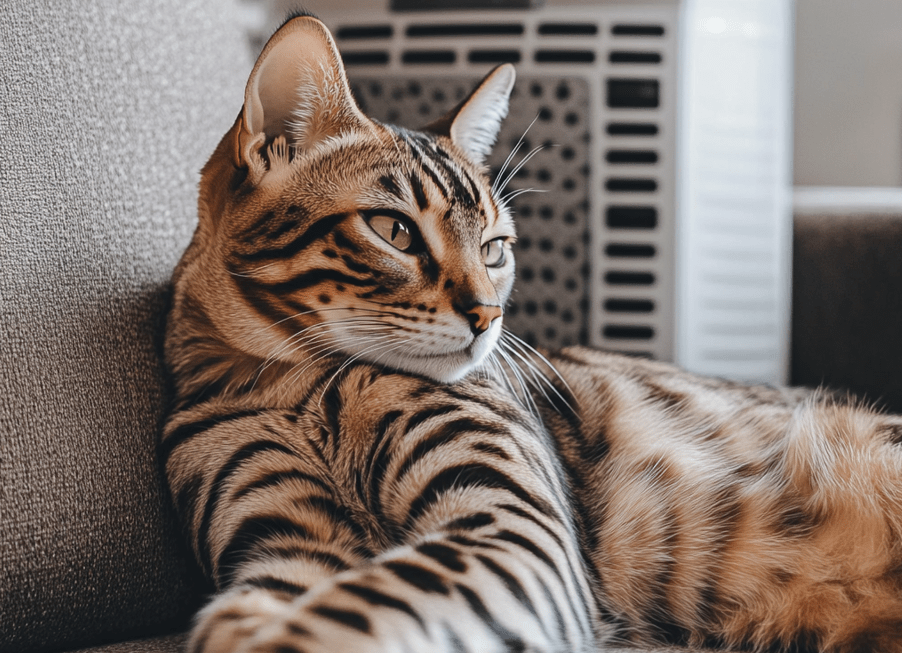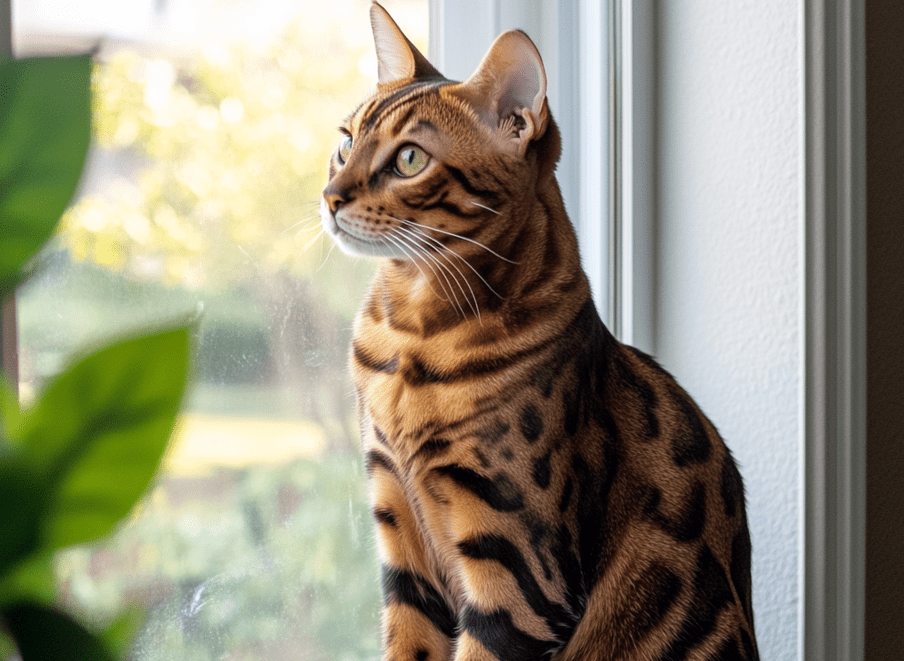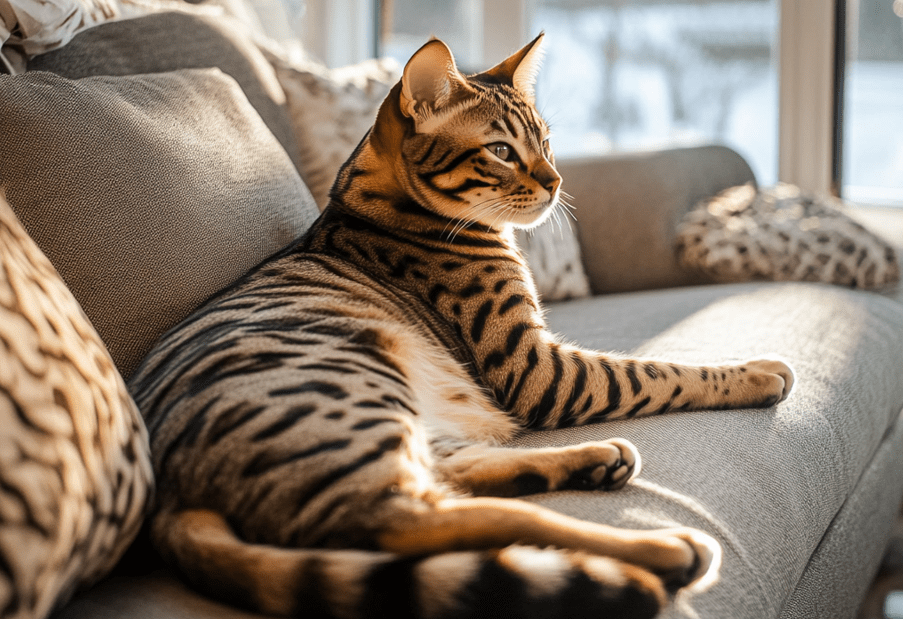
Bengal cats, with their striking spotted coats and energetic personalities, are a beloved breed known for their playful and curious nature. However, like all pets, Bengal cats can experience stress, which may affect their health and behavior if not addressed. Recognizing stress in Bengal cats is crucial for ensuring their well-being and maintaining their vibrant spirit. This comprehensive guide explores the signs of stress in Bengal cats, the causes behind it, and effective calming techniques to help your feline friend thrive.
Understanding Stress in Bengal Cats
Stress in Bengal cats can manifest in various ways, often triggered by changes in their environment, routine, or social dynamics. As a breed, Bengals are highly intelligent, active, and sensitive, making them more prone to stress when their needs for stimulation, security, or comfort are unmet. Identifying stress early allows cat owners to intervene before it escalates into more serious health or behavioral issues.
Why Bengal Cats Are Prone to Stress
Bengal cats are descendants of the Asian leopard cat, which gives them a unique blend of wild instincts and domestic traits. Their high energy levels, need for mental stimulation, and strong territorial instincts can make them more susceptible to stress than other breeds. Common stressors include:
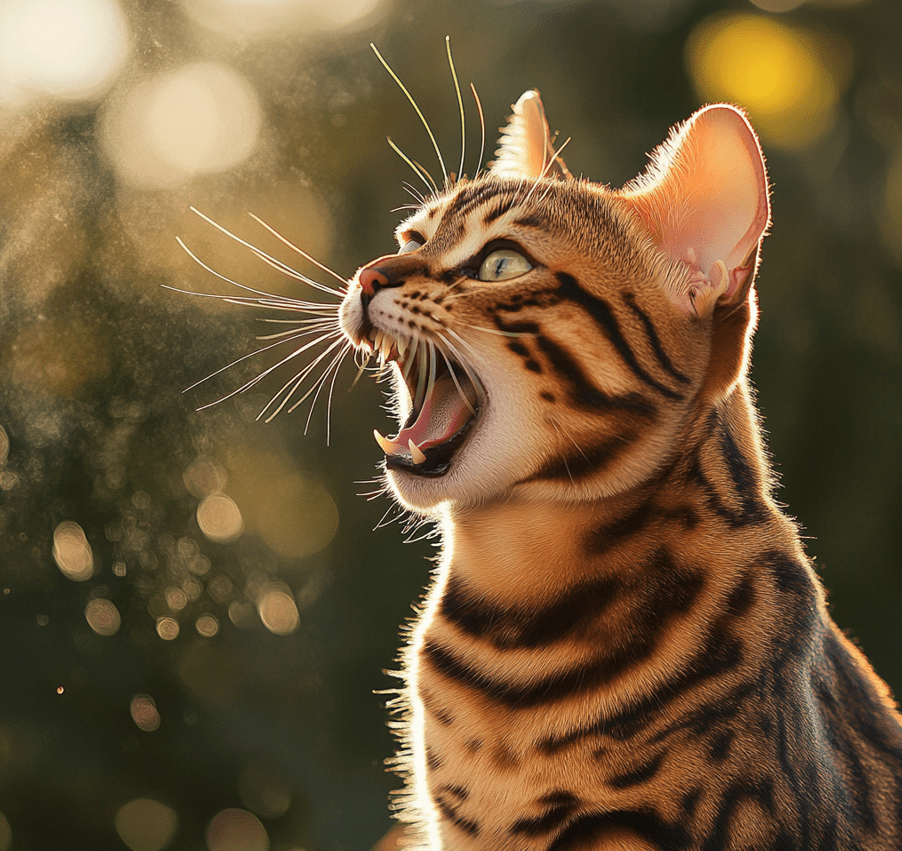
Environmental Changes: Moving to a new home, rearranging furniture, or introducing new pets.
Lack of Stimulation: Insufficient playtime or enrichment activities.
Social Stress: Conflicts with other pets or changes in household dynamics.
Health Issues: Pain or discomfort from underlying medical conditions.
Routine Disruptions: Changes in feeding schedules or owner absence.
By understanding these triggers, you can better monitor your Bengal cat for signs of distress and take proactive steps to create a supportive environment.
Signs of Stress in Bengal Cats
Recognizing stress in Bengal cats requires careful observation of their behavior, body language, and physical health. Below are the key indicators to watch for, grouped into behavioral, physical, and environmental changes.
Behavioral Signs of Stress
Excessive Vocalization: Bengals are naturally vocal, but persistent meowing, yowling, or growling may indicate discomfort or anxiety.
Aggression or Irritability: A normally friendly Bengal may become defensive, swat, or hiss when stressed.
Hiding or Withdrawal: If your cat retreats to secluded areas or avoids interaction, it may be feeling overwhelmed.
Overgrooming: Excessive licking or chewing, especially leading to bald patches, is a common stress response.
Litter Box Issues: Urinating or defecating outside the litter box can signal stress, especially if the box is clean and accessible.
Destructive Behavior: Scratching furniture, knocking over objects, or chewing on inappropriate items may indicate frustration or anxiety.
Physical Signs of Stress
Changes in Appetite: Stress may cause a Bengal cat to eat less or refuse food altogether. Conversely, some cats may overeat.
Weight Loss or Gain: Unexplained changes in weight can be linked to stress or related health issues.

Lethargy: A once-active Bengal becoming sluggish or uninterested in play may be experiencing stress or discomfort.
Gastrointestinal Issues: Vomiting, diarrhea, or constipation can be stress-related, though medical causes should be ruled out.
Dilated Pupils or Tense Posture: Wide eyes, flattened ears, or a crouched stance are physical signs of fear or anxiety.
Environmental Clues
Avoiding Certain Areas: If your Bengal avoids specific rooms or objects, it may associate them with stress.
Changes in Sleep Patterns: Sleeping more or less than usual can indicate emotional distress.
Increased Clinginess: Some Bengals may become overly attached, following their owners or seeking constant attention.
If you notice any of these signs, it’s essential to assess your cat’s environment and consult a veterinarian to rule out medical conditions that may mimic stress symptoms.
Common Causes of Stress in Bengal Cats
To effectively manage stress, it’s important to identify its root causes. Below are some of the most common stressors for Bengal cats, along with insights into how they impact your pet.
1. Environmental Changes
Bengal cats thrive on familiarity, and sudden changes can unsettle them. Moving to a new home, introducing new furniture, or even loud noises (like construction or fireworks) can trigger stress. Bengals may also react to new scents, such as cleaning products or unfamiliar visitors.
2. Lack of Mental and Physical Stimulation
Bengals are highly intelligent and require regular mental and physical activity. Without enough playtime, interactive toys, or opportunities to explore, they may become bored or frustrated, leading to stress-related behaviors like overgrooming or aggression.
3. Social Dynamics
Bengals can be territorial and may struggle to adapt to new pets or people in the household. Conflicts with other cats or a lack of attention from their owners can also contribute to stress. Additionally, Bengals may feel anxious if their primary caregiver is absent for extended periods.
4. Health-Related Stress
Undiagnosed medical issues, such as dental pain, urinary tract infections, or arthritis, can cause discomfort that manifests as stress. Always consult a veterinarian if your Bengal shows sudden behavioral changes or physical symptoms.
5. Routine Disruptions
Bengals are creatures of habit, and disruptions to their feeding, play, or sleep schedules can lead to anxiety. For example, a change in work hours that alters feeding times may unsettle your cat.
Calming Techniques for Stressed Bengal Cats
Once you’ve identified the signs and potential causes of stress, you can implement calming techniques to help your Bengal cat feel secure and relaxed. Below are practical, evidence-based strategies to reduce stress and promote well-being.

1. Create a Safe and Enriched Environment
Provide Safe Spaces: Set up cozy hiding spots, such as cat beds, tunnels, or high perches, where your Bengal can retreat when overwhelmed.
Enrich Their Space: Offer interactive toys, puzzle feeders, and climbing structures to keep your Bengal mentally and physically engaged.
Maintain Consistency: Keep litter boxes, food bowls, and bedding in familiar locations to provide a sense of stability.
2. Engage in Regular Playtime
Bengals need at least 20–30 minutes of active play daily to burn off energy and reduce stress. Use toys that mimic prey, such as feather wands or laser pointers, to satisfy their hunting instincts. Rotate toys regularly to keep them engaging.
3. Use Calming Products
Pheromone Diffusers: Products like Feliway mimic natural feline pheromones, creating a calming effect. Place diffusers in areas where your Bengal spends the most time.
Calming Treats or Supplements: Consult your vet about stress-relieving treats or supplements containing ingredients like L-theanine or chamomile.
Soothing Music: Soft classical music or cat-specific calming tracks can reduce anxiety, especially during stressful events like thunderstorms.
4. Address Social Stress
Gradual Introductions: When introducing new pets or people, do so slowly, allowing your Bengal to adjust at their own pace.
Positive Reinforcement: Reward calm behavior with treats or affection to reinforce positive associations with new situations.
One-on-One Time: Spend quality time bonding with your Bengal to strengthen your relationship and reduce feelings of neglect.
5. Maintain a Consistent Routine
Stick to a regular schedule for feeding, play, and litter box cleaning. If changes are unavoidable (e.g., travel or a new work schedule), introduce them gradually and monitor your cat’s response.
6. Consult a Veterinarian
If stress persists or is accompanied by physical symptoms, schedule a vet visit to rule out underlying health issues. Your vet may recommend behavioral therapy, medication, or a referral to a feline behaviorist for severe cases.
7. Explore Alternative Therapies
Some Bengal owners find success with alternative therapies like:
Acupressure or Massage: Gentle petting or targeted massage can relax your cat and strengthen your bond.
Aromatherapy: Use pet-safe essential oils (with veterinary approval) to create a calming atmosphere.
Tellington TTouch: This method involves specific touch techniques to reduce stress and improve behavior.
Always research and consult professionals before trying alternative therapies to ensure they’re safe for your cat.
Preventing Stress in Bengal Cats
Prevention is key to keeping your Bengal cat happy and healthy. Here are proactive steps to minimize stress:
Regular Health Checkups: Annual vet visits can catch health issues early, preventing discomfort that leads to stress.
Balanced Diet: Feed high-quality, nutritionally complete food to support your Bengal’s physical and mental health.
Socialization: Expose your Bengal to new experiences, people, and pets early on to build confidence and adaptability.
Spay or Neuter: Unaltered cats may experience stress from hormonal urges or territorial conflicts.
Monitor Body Language: Learn to read your Bengal’s cues, such as tail flicking or ear positioning, to address discomfort before it escalates.
When to Seek Professional Help
If your Bengal’s stress doesn’t improve with home interventions, consider consulting a professional. A veterinary behaviorist or certified cat behavior consultant can assess your cat’s environment, behavior, and history to develop a tailored plan. Signs that professional help is needed include:
-
Persistent aggression or fearfulness.
-
Chronic overgrooming or self-harm.
-
Ongoing litter box avoidance.
-
Significant changes in appetite or weight.
Conclusion
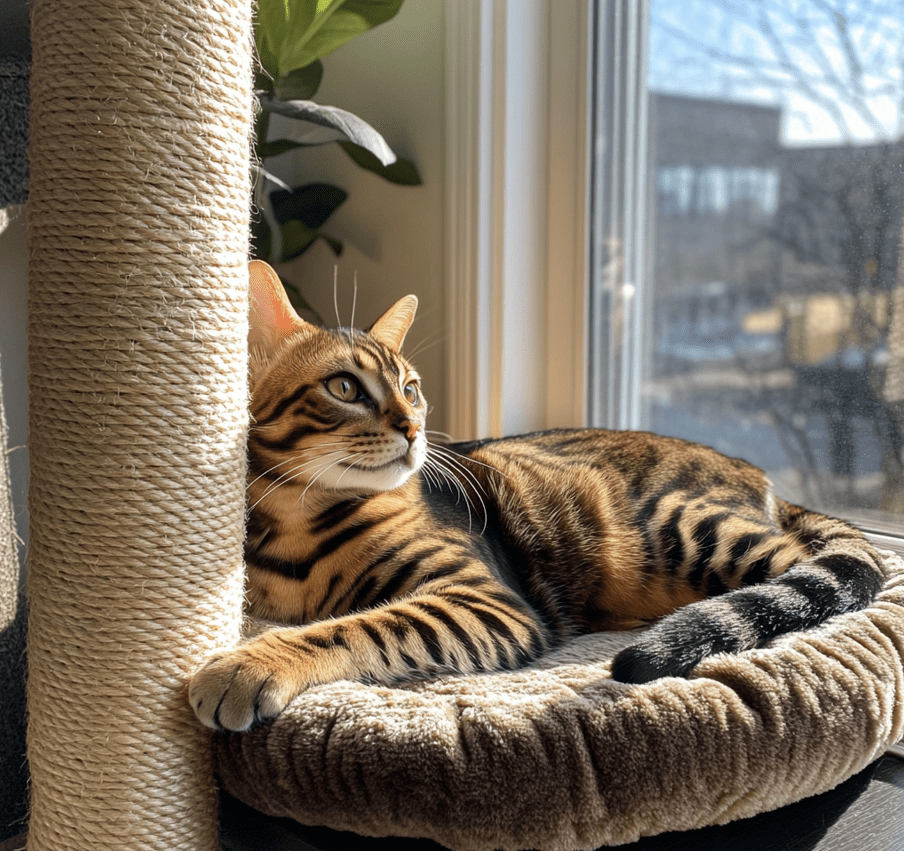
Recognizing stress in Bengal cats is the first step toward ensuring their happiness and well-being. By understanding the signs—such as excessive vocalization, hiding, or changes in appetite—and addressing the root causes, you can help your Bengal thrive in a supportive environment. Calming techniques like enriched spaces, regular play, and pheromone diffusers, combined with a consistent routine, can significantly reduce stress. For persistent issues, don’t hesitate to seek veterinary or behavioral support.
With their vibrant personalities and unique needs, Bengal cats bring joy and energy to any home. By staying attuned to their emotional and physical health, you can foster a strong bond and provide a stress-free life for your feline companion.


